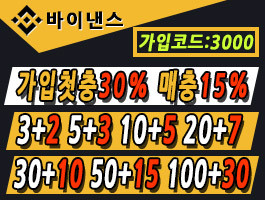Poker Bluffing Techniques
작성자 정보
-
 Jessika 작성
Jessika 작성
- 작성일
본문
Poker Bluffing Techniques
How to tell when someone is bluffing in poker?
Bluffing is a critical a part of poker, and figuring out when somebody is doing it can provide you a significant benefit. Here are some techniques to assist you detect bluffing:
1. Observe Betting Patterns
Players who're bluffing usually exhibit inconsistent betting patterns. If a participant suddenly raises considerably after a interval of passive betting, it could point out a bluff.

2. Pay Attention to Body Language
Body language can reveal lots a couple of player's emotional state. Watch for signs of nervousness, corresponding to fidgeting, avoiding eye contact, or displaying tense feelings. A relaxed demeanor can indicate confidence of their hand.
3. Analyze the Board Texture
Consider how the group cards align with the participant's perceived hand range. If the board is unfavorable for a bluff, but the participant is betting heavily, they may be attempting to intimidate quite than genuinely symbolize a powerful hand.
4. Look for Timing Tells
A participant's timing can be a clue. Quick bets might indicate a robust hand, whereas extended hesitation before betting may sign uncertainty or bluffing.
5. Assess the Player's Image
Understanding the player's traditional fashion may help. A player known for his or her tight play is much less prone to bluff in comparability with a loose-aggressive player. Adjust your interpretation primarily based on their typical conduct.
6. Watch for Sudden Confidence
If a participant who usually plays cautiously suddenly turns into aggressive, it may point out that they're bluffing, trying to persuade others of a stronger hand than they really hold.
7. Trust Your Instincts
Finally, your instinct can be a powerful device. If you've a hunch that a player is bluffing, it's worth contemplating. Sometimes, players give off subtle hints that resonate with your intestine feelings.
In summary, profitable bluff detection includes cautious statement and a mixture of analyzing betting patterns, body language, and participant historical past. Stay alert and trust your instincts to boost your poker recreation.
Do poker gamers faux tells?
Yes, poker gamers usually fake tells as a part of their overall strategy to deceive opponents. By manipulating their habits, gamers can create false alerts that mislead others in regards to the strength of their hands. This technique is called "reverse tells" and is a crucial component of bluffing methods in poker.
Common Techniques for Faking Tells
- Physical Posturing: Players might undertake assured physique language to counsel energy or, conversely, appear nervous to indicate weak spot.
- Bet Sizing: Varying wager sizes unpredictably can confuse opponents regarding the player's intentions.
- Vocal Cues: Changing the tone or quantity of voice also can mislead gamers about the recreation's dynamics.
Ultimately, faking tells involves a eager understanding of human psychology and the flexibility to learn opponents effectively. Players strive to maintain a balance between real tells and deliberate deception to boost their bluffing strategy.
Importance of Observing Opponents
Understanding how opponents react to certain behaviors is crucial. By observing their responses, players can adapt their own tells and bluffs accordingly:
- Recognize Patterns: Take notice of how opponents usually react to particular situations.
- Adjust Accordingly: Modify your own tells based mostly on these observations.
In conclusion, faking tells is a classy tactic used by expert poker players to throw their opponents off guard and safe profitable palms via effective bluffing.
What is one of the best 5 card rule in poker?
In poker, 다바오머니 - cgi.members.interq.or.jp - the "best 5 card rule" may be interpreted as a suggestion for effective bluffing techniques. Bluffing is an essential part of the sport, allowing players to win pots even without the strongest hand. Here are some key strategies to contemplate:
Understanding the Best 5 Card Rule for Bluffing
- Know Your Opponents: Analyzing your opponents’ taking part in styles may give you insight into when a bluff may be profitable. Pay consideration to their betting patterns and tendencies.
- Board Texture: Consider the group playing cards. A well-coordinated board with potential straights or flushes is often a good opportunity to bluff, as it might scare your opponents away.
- Position Matters: Bluffing from a late place is usually simpler as a result of you've more information about other gamers' actions earlier than you make your move.
- Use Bet Sizing Wisely: Your guess size ought to reflect the energy of your hand. A giant wager on a weak hand may result in suspicion, while a smaller bet could not persuade your opponents to fold.
- Consistency is Key: If you’ve been taking part in tight, a sudden aggressive bluff might catch opponents off guard. However, when you continually bluff, players will catch on and name you out.
Additional Tips for Successful Bluffing
- Maintain a robust desk picture.
- Don’t bluff too regularly; select your spots correctly.
- Be conscious of the number of gamers still in the hand—more gamers mean a better chance someone has a strong hand.
- Understand when to give up; not each scenario is ripe for a bluff.
- Practice studying your opponents—body language and betting behavior may be telling.
By making use of these techniques along with the understanding of the "greatest 5 card rule" in poker, gamers can elevate their bluffing effectiveness and improve their total sport strategy.
관련자료
-
이전
-
다음작성일 2024.12.04 04:12




